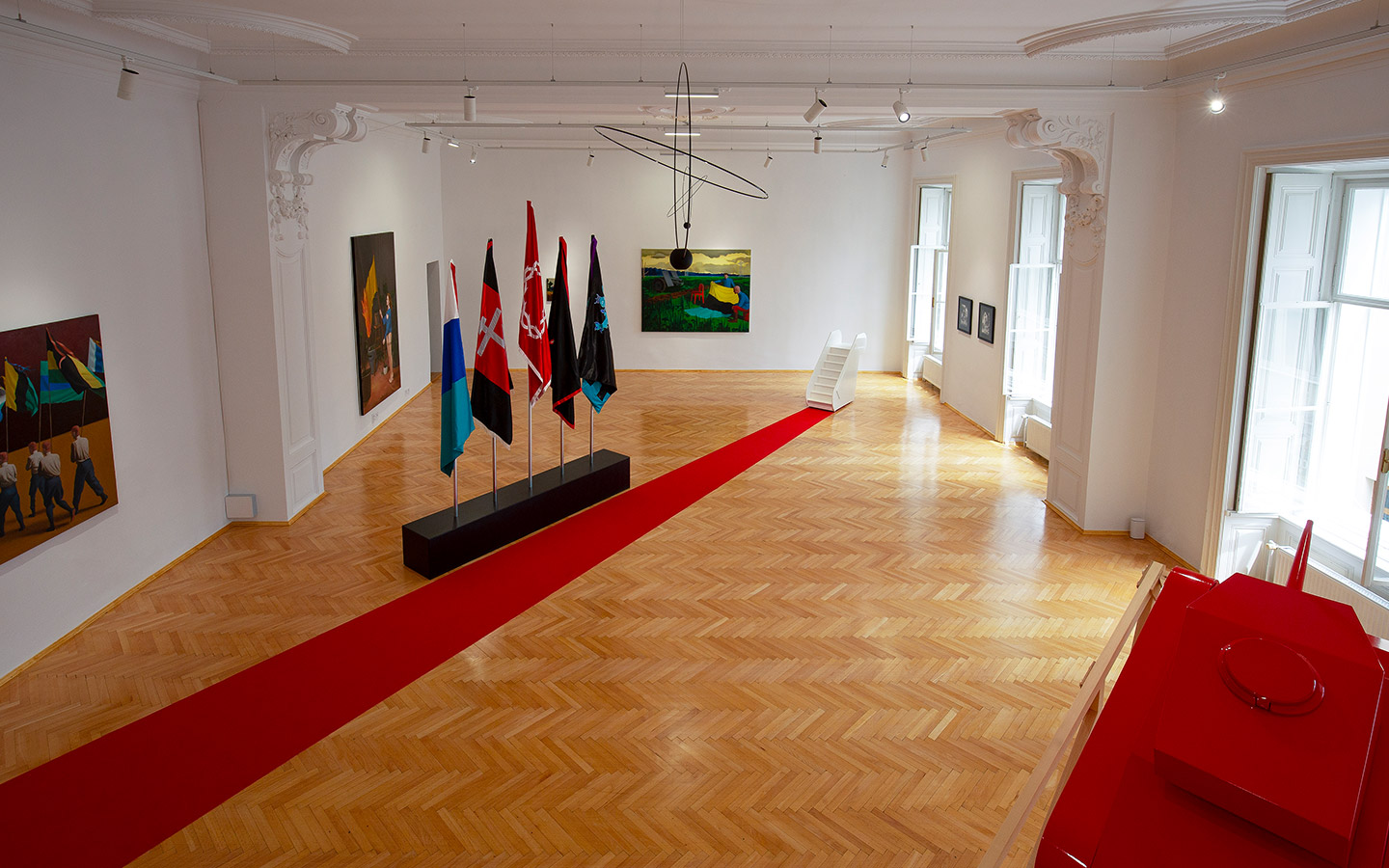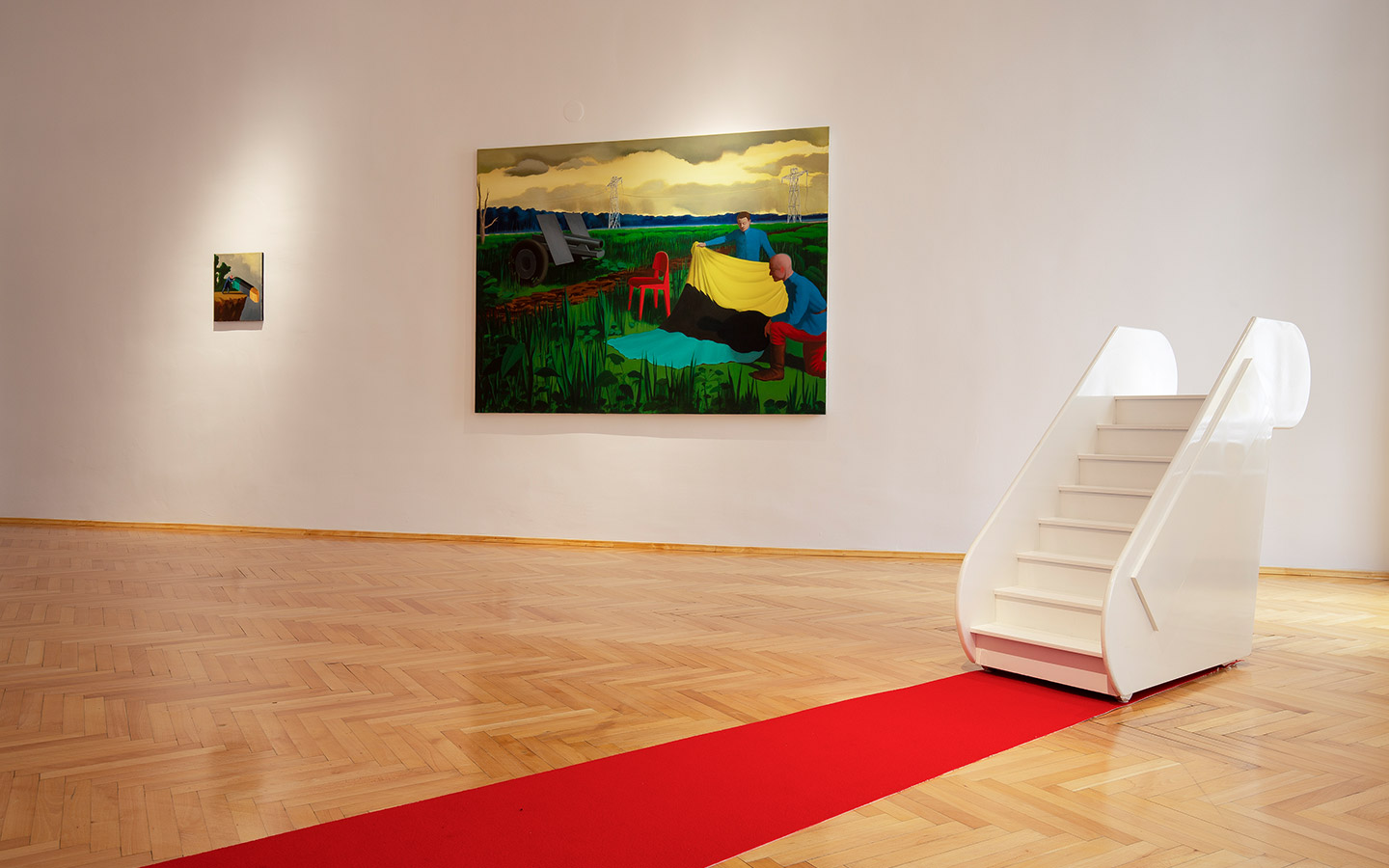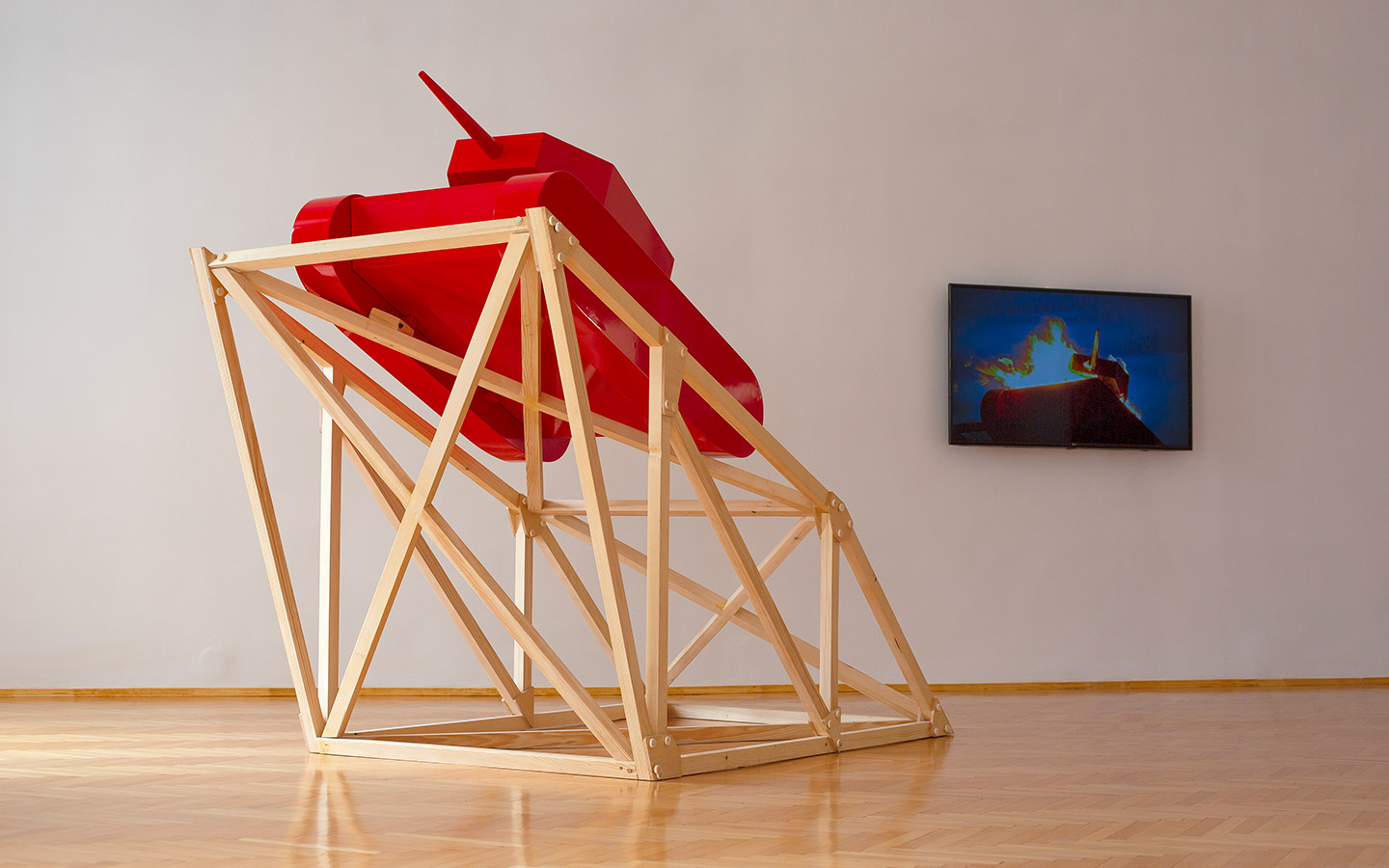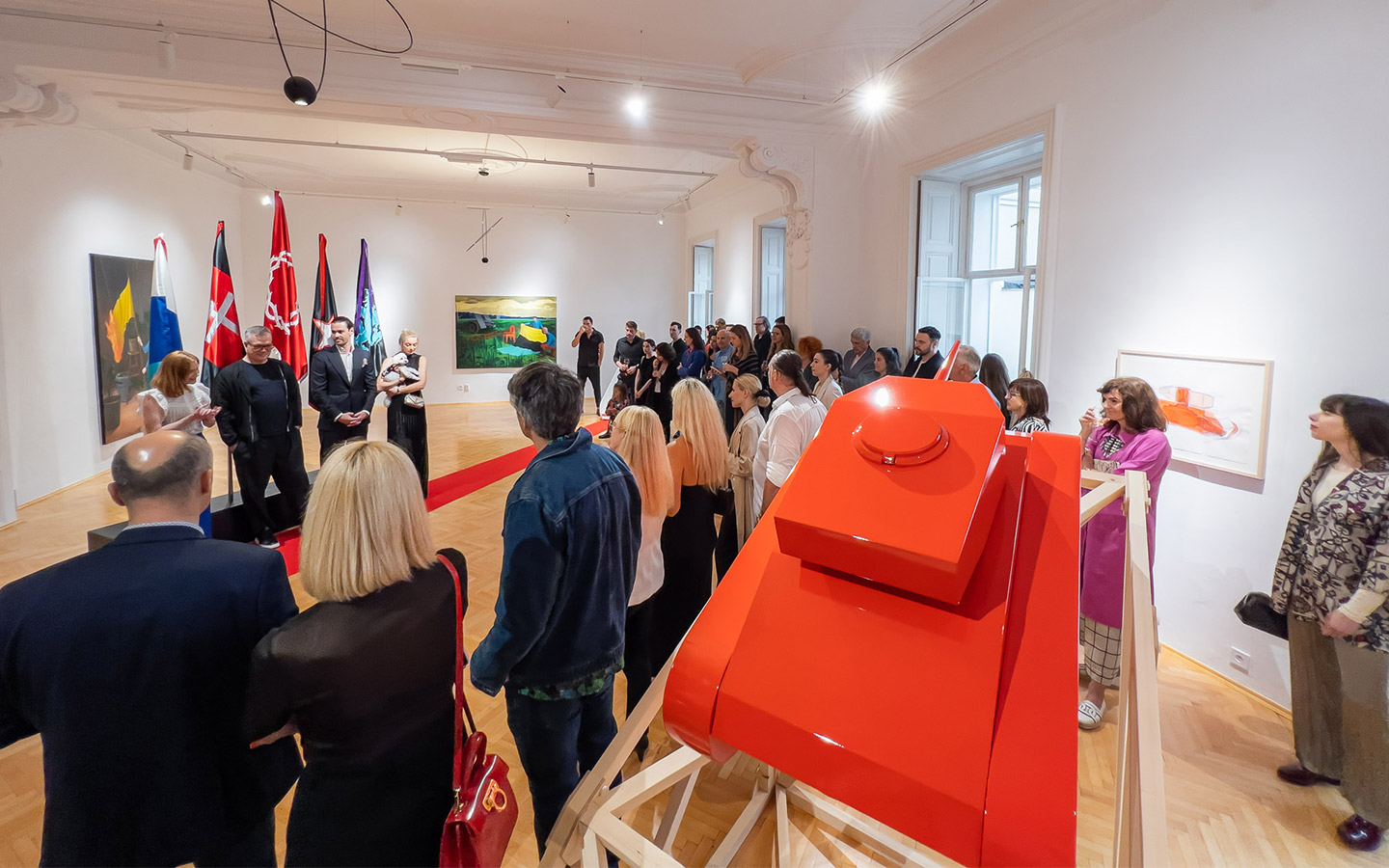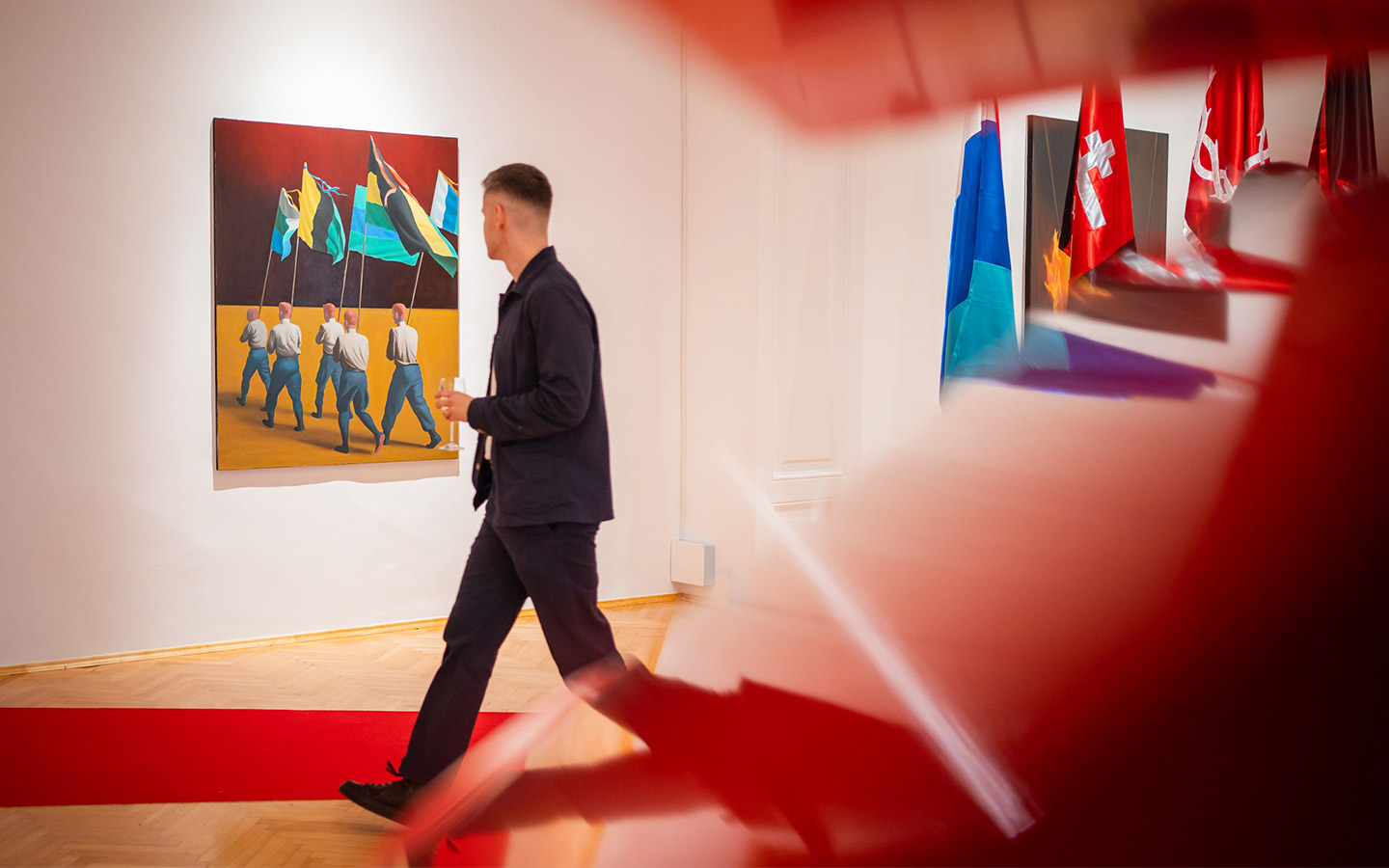POWERPLAY
by Mihael Milunović
Artist: Mihael Milunović
Curator: Dr. Julia Tatiana Bailey
Opening: 08.06.2023
Duration: 09.06.2023 – 31.08.2023
Steinhauser Gallery, Bratislava, Slovakia
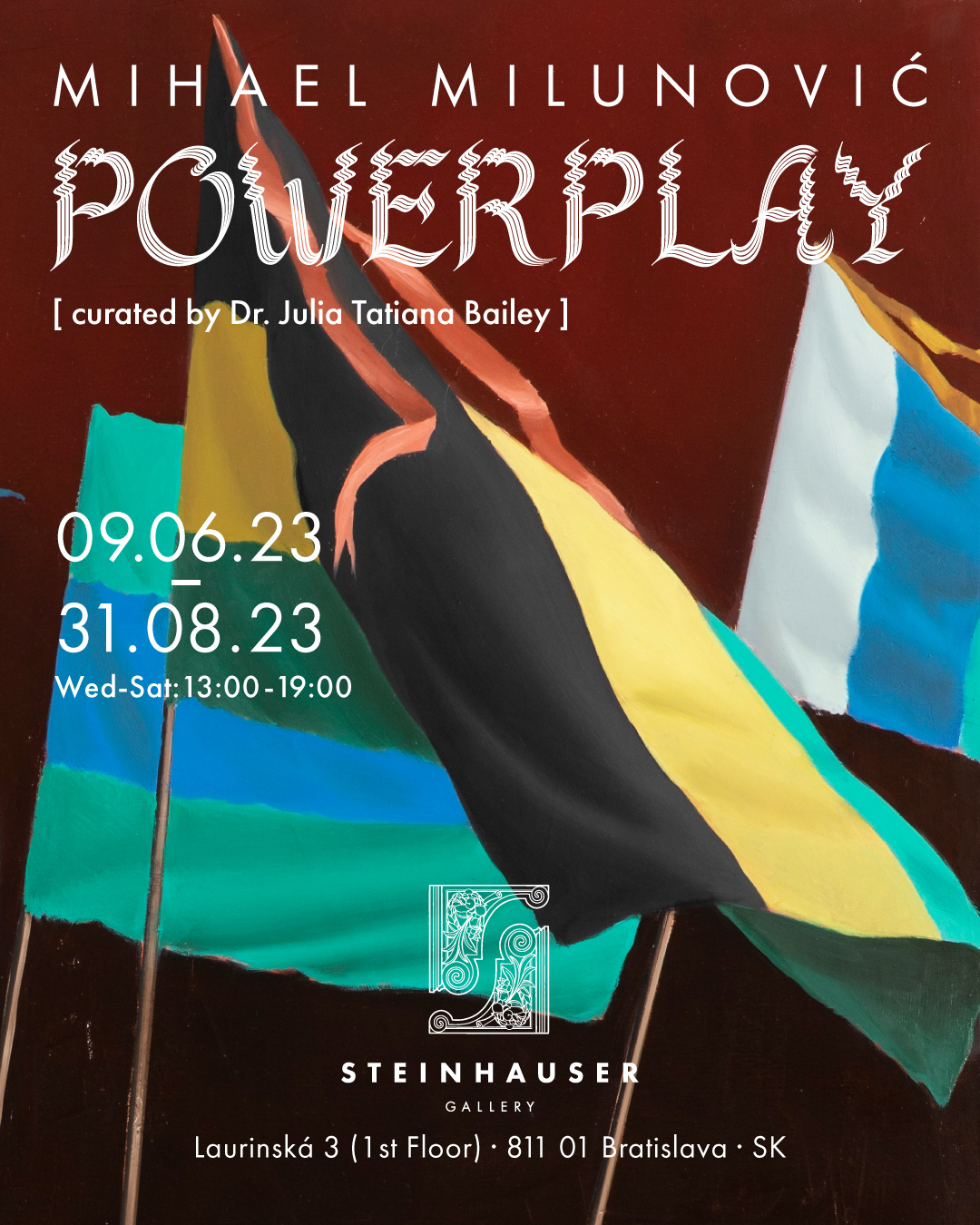
At the center of Powerplay, Mihael Milunović’s exhibition to launch Steinhauser Gallery Bratislava, the red tank ascends triumphantly, its gun turret pointing provocatively in the air. Conceived in 2008, this image has renewed power to intimidate as the return of tanks on Europe’s borders stirs painful collective memories of the days they rumbled through its capital cities. Painted bright red, this tank claims the color of blood, of passion, of revolution – vying to take its place among the foreign tanks that occupied monumental plinths in post-war Europe while speaking of liberation. Red Tank at first triggers an emotional response in the viewer, who falls into the semiotic trap of the simulacrum, stirred by learnt codes to conjure images of war. But on further viewing, this object appears increasingly harmless, even comical – more paper tiger than Tiger tank. The makeshift platform that supports the tank’s ascent seems ineffectual, barely able to contain its weight and cutting short its advance; while what poses as a military vehicle – a symbol and enforcer of power – is revealed to be an oversized wooden toy. Its bold maneuver to take control becomes, in all senses, a powerplay.
Red Tank’s elevation of intimate personal memories to the level of collective memorialization, turning the everyday into the extraordinary, epitomizes the prophetic themes in Milunović’s oeuvre dating from the early 1990s. Across a multidisciplinary practice – incorporating painting and drawing, photography and video, sculpture and installation – Milunović has repeatedly explored the pageantry and potency of the symbols that construct our lived realities, helping us to make sense of our world. These socio-philosophical concerns are born out of the artist’s personal biography: from a childhood in socialist Yugoslavia, to early adulthood in the midst of the country’s violent splintering, when he found a new home in Paris. While Milunović creates ominous dreamscapes in the paintings, drawings, and sculptures that form this exhibition, the flickering flames from the burning tank provide a timely reminder of how the line between empowered and powerless can shift in an instant. The curtailed ascent of the red tank is mirrored in the sculpture Stairs, where instead of military might the color of the red carpet indicates social power and celebrity. The quintessential VIP accessory has been rolled out for what should be a glamorous photo opportunity, inviting a person of influence to step into a private jet and be whisked off to an exclusive location. But here the vehicle – the culminating symbol of the person’s status – is missing, and this red carpet is exposed as another kind of powerplay, an illusion of authority and an empty promise that leads to disappointment. Milunović once again teases the viewer through a play on perspective, with the false linear perspective of the carpet that leads up to the scaled-down stairs creating an unsettling trompe l’oeil effect that reflects on the precarious delineation of real from fake, great from insignificant. And by means of this visual trick, the artist once again encourages us to ask uncomfortable questions about our own perception of reality.
The empty promises of symbols of power are also evident in the five oil paintings on display, as expressed above all through the image of the flag. These material manifestations of groups and nations abound in Milunović’s work, as the artist explores their profound allegorical significance. But in place of the colors that have long stirred patriotic fervor, Milunović’s flags are based on inverted colors. Through the intervention of digital technology, the flag’s “true” appearance can only be revealed by simultaneously concealing the identity of the people alongside it, calling attention to the object’s disturbing role of absorbing the individual into the collective. The five hand-sewn flags that are lined up in the installation, likewise based on inverted colors, give those who encounter the work the chance to undergo this transformation for themselves, and offer up their individuality to the self-oblivion of the group.
In Milunović’s paintings the flags are treated in a subversive manner, disrupting the traditions and rituals of flag display through familiar but altered settings. In March of Flags, they are hoisted high above a military-style parade, but the figures are in retreat, with their veneration for a multitude of undefined flags appropriating the dynamics of collectivity while reinforcing individualistic allegiances. In The Leader, the flag is waved by a child, mirroring the artist’s own memories of waving small paper flags at the passing limousine of Yugoslav leader Marshal Tito. But the child is held aloft by an amorphous humanoid, dressed in an unidentifiable military uniform – the innocent in the uncertain grasp of an unaccountable power. In Red Chair, the flag is caught ambiguously between glorification as devotional icon and utility as protective blanket. The disrespectful act of placing the flag on the ground is intensified by the figure kneeling next to it in what may be a gesture of respect or reproach, evoking divisive public debate about “taking the knee” alongside symbols of nationhood. Milunović also subjects his flags to iconoclasm: in Slide, what appears to be a flag-draped coffin is unceremoniously pushed off a cliff, a jarring treatment of a poignant symbol of heroism and sacrifice; while in Nausoktonos, the flag catches fire, its flying sparks threatening to burn down its surroundings, while the unseeing eyes of the exposed young woman who holds the flagstaff leave her at risk of being consumed by the blaze as much as the viewer’s gaze.
In Death with White Flag, one of a series of four delicate ink drawings that set intriguing characters against the smoldering embers of a bombed-out city, the symbol of surrender is brandished by a skeleton, who strides confidently across the ravaged landscape – the roses at his feet as though welcoming a returning hero. Meanwhile, the innocence of The Girl, who appears ready to perform at a pageant, jars with the provocative sexuality of the woman in The Bomb, her living flesh unveiled above scatterings of skull and bones. Between then, The Painter raises his brush in the air, appearing to create reality for the tiny figures at his feet, his featureless head signaling the precarious nature of the future being formed.
Throughout Powerplay, Milunović challenges our expectations through unfamiliar actions or juxtapositions. Through his disquieting blend of the menacing and mischievous, all-knowing and innocent, the strategies for controlling our sense of reality are uncovered as often being little more than a game, more play than power. By provoking us into questioning the unchallenged attributes of the symbols that surround us, Milunović alerts us to their inherent instability, giving us space to reclaim our own power as we create new and more fulfilling meanings.
Dr. Julia Tatiana Bailey, April 2023


